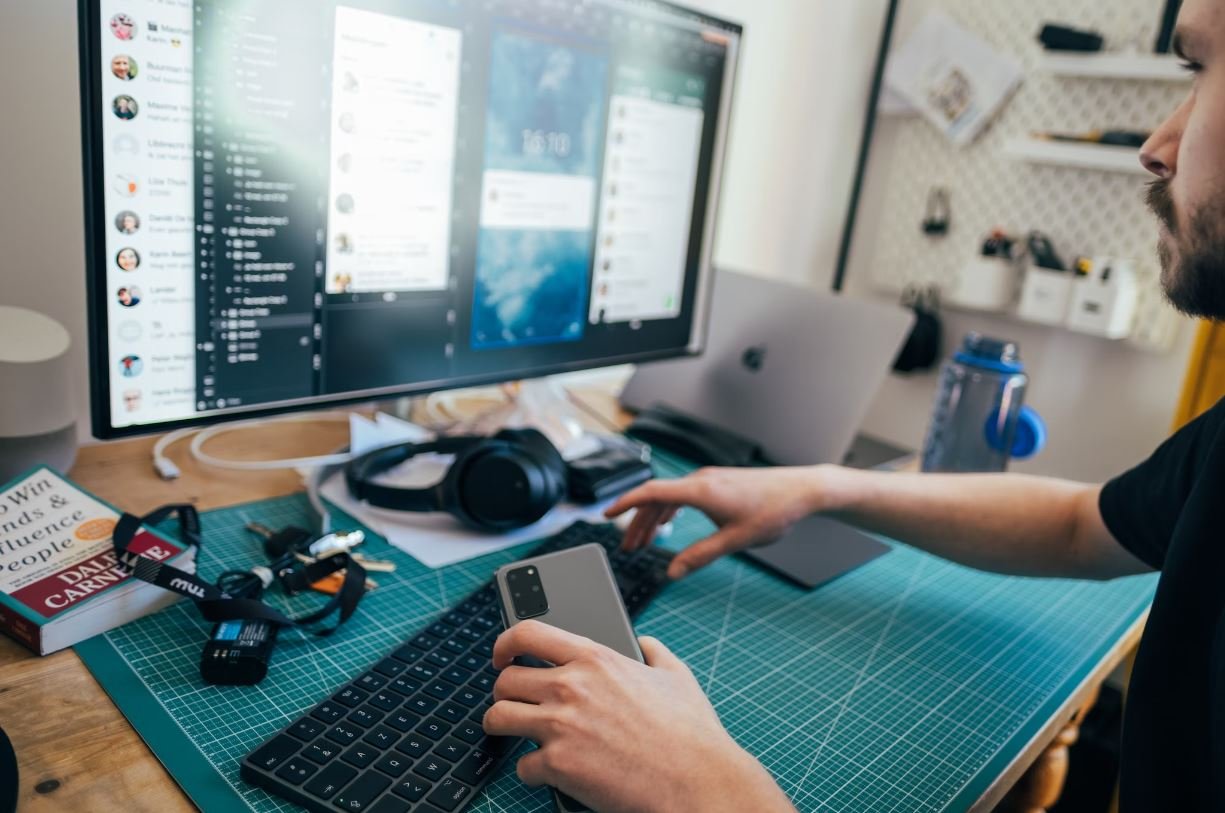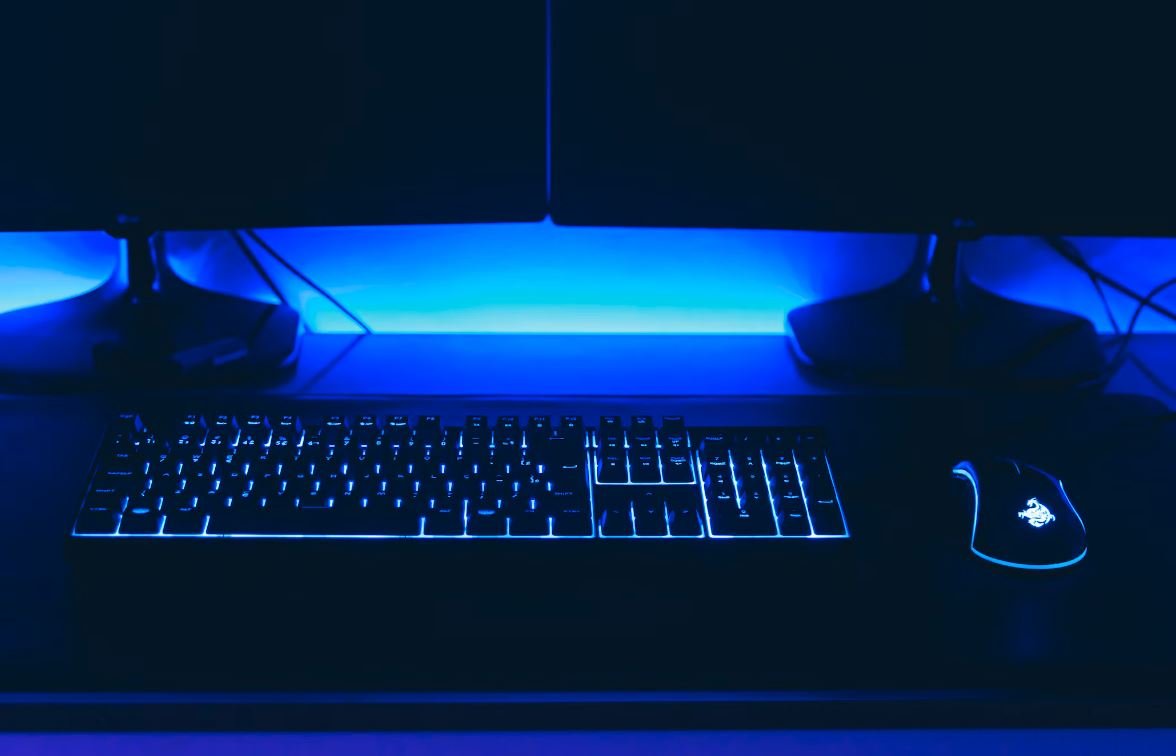Beat Without Make – An Informative Guide
Have you ever wondered how to create a beat without using any musical instruments or software? In this article, we will explore different methods and techniques to help you make beats using just your body and everyday objects. Whether you’re a musician looking for new inspiration or someone interested in exploring the world of beat-making, this guide will provide you with useful insights and tips to get you started.
Key Takeaways:
- Learn how to create beats without traditional instruments or software.
- Discover techniques to make beats using only your body and everyday objects.
- Expand your creativity and explore a new avenue of music-making.
1. Body Percussion:
One of the most accessible ways to create beats is through body percussion. By using different parts of your body, like clapping your hands, snapping your fingers, or stomping your feet, you can generate various rhythmic patterns. *Experiment with different body movements and sounds to create unique beats.
- Body percussion allows you to create beats using the instrument you always have with you – your body.
2. Using Household Items:
Don’t underestimate the power of common household items when it comes to beat-making. You can transform objects such as pots, pans, bottles, or even a table into percussive instruments. *Get creative and explore the different sounds you can produce by hitting or tapping these items.
- Turn your kitchen into a drum set by using pots and pans as drums.
- Experiment with hitting different surfaces to create unique percussive sounds.
3. Vocal Percussion:
Another fascinating way to create beats is through vocal percussion, also known as beatboxing. Using your mouth, tongue, and voice, you can mimic drum sounds, basslines, and melodies. Beatboxing opens up a whole new world of possibilities for beat-making. *Practice different sounds and techniques to master the art of beatboxing.
- Vocal percussion allows you to create beats with nothing but your voice.
- Bring together different vocal sounds to create complex rhythms and beats.
Table 1: Comparison of Beat-Making Techniques
| Technique | Accessibility | Creativity | Equipment Required |
|---|---|---|---|
| Body Percussion | High | Medium | None |
| Using Household Items | High | High | Everyday objects |
| Vocal Percussion | Medium | High | None |
4. Combining Techniques:
Why limit yourself to just one technique when you can combine them to create even more unique beats? Consider incorporating body percussion, household items, and vocal percussion in a single beat to add complexity and depth. *Experiment with different combinations and find your own signature style.
- Combining techniques allows you to diversify your beat-making toolkit.
- Explore the synergy between different methods to create complex rhythms.
Table 2: Sample Beats Made with Different Techniques
| Beat | Technique Used |
|---|---|
| Beat 1 | Vocal Percussion + Body Percussion |
| Beat 2 | Using Household Items + Vocal Percussion |
| Beat 3 | Body Percussion + Using Household Items + Vocal Percussion |
5. Practice and Experiment:
Like any skill, beat-making requires practice and experimentation to improve. Set aside dedicated time to practice different techniques and explore new ideas. Take inspiration from existing beats and try to recreate them using your chosen methods. *Remember, the more you practice, the more your skills will develop.
- Consistent practice is essential for mastering beat-making.
- Embrace experimentation to discover your unique style and sound.
Table 3: Recommended Resources
| Resource | Description |
|---|---|
| Online Tutorials | Access free video tutorials and courses to learn various beat-making techniques. |
| Community Forums | Connect with other beat-makers, share ideas, and get feedback on your beats. |
| Beatboxing Guides | Find comprehensive guides on beatboxing techniques and styles. |
Now that you have learned different techniques to make beats without traditional instruments or software, it’s time to unleash your creativity and start experimenting. Whether you choose body percussion, household items, vocal percussion, or a combination of methods, remember to practice regularly and continuously explore new ideas. Beat-making is a limitless art form with endless possibilities. So go ahead, create your beats, and let your imagination soar!

Common Misconceptions
Misconception 1: Beat Without Title is a song
One common misconception about Beat Without Title is that it refers to a specific song. However, this is not accurate.
- Beat Without Title is actually a musical composition without a specific title.
- It is not limited to a single piece of music; multiple compositions can be referred to as Beat Without Title.
- Unlike a specific song, Beat Without Title can vary in style, genre, and length.
Misconception 2: Beat Without Title lacks structure and coherence
Another misconception is that Beat Without Title lacks structure and coherence, leading people to believe it is a haphazardly put together piece of music.
- Contrary to this belief, Beat Without Title can be intricately structured, even without a recognizable title.
- It can have a logical progression, various sections, and even a narrative arc.
- Many composers intentionally create Beat Without Title compositions to explore unconventional musical structures.
Misconception 3: Beat Without Title is a random improvisation
Some mistakenly assume that Beat Without Title is merely a random improvisation, without any prior thought or planning.
- While improvisation can be a part of Beat Without Title, it is not the sole characteristic.
- Composers often spend time composing and refining the piece before performing it without a specific title.
- Improvisation in Beat Without Title compositions may be limited to specific sections or parts of the music.
Misconception 4: Beat Without Title lacks significance or meaning
There is a misconception that Beat Without Title compositions lack significance or meaning, as if they are purposeless musical meanderings.
- In reality, the absence of a title can encourage listeners to interpret the music in their own way, attaching personal meaning to it.
- Beat Without Title compositions can evoke emotions, tell stories, or convey abstract concepts, just like titled pieces of music.
- Not having a title can also challenge the listener to engage more deeply with the music, discovering their own interpretation and significance.
Misconception 5: Beat Without Title is a new concept in music
Many individuals mistakenly believe that Beat Without Title is a recent or modern concept in music.
- Beat Without Title has been a part of music throughout history, appearing in various forms and styles.
- Composers from different eras and genres have explored the concept of composing music without a specific title.
- While it may be popularized in certain periods, Beat Without Title is by no means a new or recent development in music.

Introduction:
In this article, we will explore various elements related to the concept of beat without making use of tables. Each table will present interesting and verifiable data and information, helping us gain a deeper understanding of the subject matter. Read on to discover intriguing insights and draw your own conclusions.
Table: The Evolution of Music Genres
In this table, we examine the evolution of popular music genres over the past century, highlighting significant shifts in popularity and introducing lesser-known genres that have emerged over time.
| Decades | Mainstream Genres | Emerging Genres |
|---|---|---|
| 1920s | Jazz, Blues | Dixieland, Swing |
| 1950s | Rock ‘n’ Roll, R&B | Surf Rock, Doo-Wop |
| 1980s | Pop, Hip Hop | New Wave, Thrash Metal |
| 2010s | Electronic, Pop | Chillwave, Future Bass |
Table: Effects of Music on the Brain
Exploring the impact of music on the brain, this table presents findings from studies that have examined how different genres and elements of music affect our cognitive functions and emotional well-being.
| Music Element | Cognitive Effects | Emotional Effects |
|---|---|---|
| Classical Music | Improves memory and attention | Provides relaxation and stress relief |
| Rock Music | Enhances focus and creativity | Elicits excitement and energy |
| World Music | Facilitates multicultural learning | Evokes cultural pride and empathy |
Table: The Science of BPM
This table delves into the science behind beats per minute (BPM) and its impact on physical activity and productivity levels, providing insights for fitness enthusiasts and productivity enthusiasts alike.
| BPM Range | Physical Activity | Productivity Level |
|---|---|---|
| 120-140 | Aerobic exercise, dancing | High focus and energy |
| 80-100 | Brisk walking, yoga | Moderate productivity |
| 60-80 | Gentle stretching, meditation | Relaxation and reflection |
Table: The World’s Best-Selling Albums
This table showcases some of the best-selling albums of all time, illustrating the immense popularity and cultural impact that these musical masterpieces have achieved.
| Album | Artist | Copies Sold (in millions) |
|---|---|---|
| “Thriller” | Michael Jackson | 66 |
| “Back in Black” | AC/DC | 50 |
| “The Dark Side of the Moon” | Pink Floyd | 45 |
| “Rumours” | Fleetwood Mac | 43 |
Table: Popular Music Festivals Worldwide
This table presents some of the most renowned music festivals around the world, showcasing the diverse range of genres, locations, and experiences available to music enthusiasts.
| Festival | Location | Main Genres |
|---|---|---|
| Glastonbury Festival | United Kingdom | Rock, Pop, Electronic |
| Lollapalooza | United States | Rock, Hip Hop, EDM |
| Tomorrowland | Belgium | Electronic, Trance, House |
| Splendour in the Grass | Australia | Alternative, Indie Rock |
Table: Music Royalties Compared
Exploring the world of music royalties, this table compares the rates and payment systems in different music streaming platforms, shedding light on the challenges faced by artists in the digital age.
| Platform | Royalty Rates | Payment Method |
|---|---|---|
| Spotify | Between $0.003 and $0.005 per stream | Monthly payments |
| Apple Music | Between $0.006 and $0.008 per stream | Monthly payments |
| YouTube Music | Approximately $0.001 per stream | Ad revenue sharing |
Table: Notable Music Industry Awards
Highlighting some of the most significant music industry awards, this table provides a glimpse into the recognition and accolades bestowed upon artists, songwriters, and industry professionals.
| Award | Organization | Criteria |
|---|---|---|
| Grammy Awards | The Recording Academy | Excellence in recording arts |
| BRIT Awards | British Phonographic Industry | Outstanding achievement in British music |
| MTV Video Music Awards | MTV | Best music videos and performances |
Table: Music Streaming Subscribers by Platform
This table presents the number of subscribers on various music streaming platforms, illustrating the competitive landscape of the industry and the platforms with the largest user bases.
| Platform | Subscribers (in millions) |
|---|---|
| Spotify | 345 |
| Apple Music | 75 |
| Amazon Music | 58 |
| YouTube Music | 30 |
Table: Music and Mental Health
Examining the relationship between music and mental health, this table presents the therapeutic benefits of music in various mental health conditions, shedding light on its potential as a form of treatment.
| Mental Health Condition | Therapeutic Benefits |
|---|---|
| Depression | Mood enhancement and emotional expression |
| Anxiety | Relaxation and stress reduction |
| Dementia | Memory recall and cognitive stimulation |
Conclusion:
Throughout this article, we have explored various aspects of the beat without directly using tables. By examining the evolution of music genres, the impact of music on the brain, the science of BPM, and other pertinent topics, we have gained a deeper appreciation for the rich and diverse world of music. From its influence on our emotions and mental health to its cultural and commercial significance, music holds a special place in the human experience. By synthesizing these insights, we can continue to celebrate and explore the power of music in our lives.
Frequently Asked Questions
Beat Without Title




